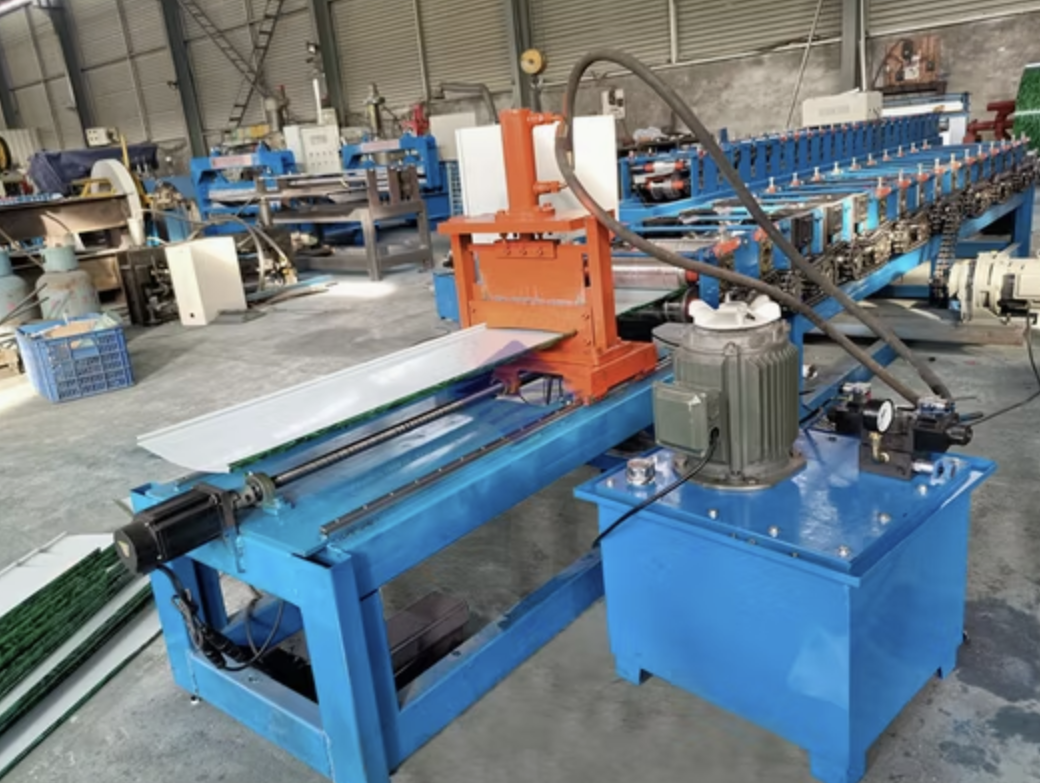
Posted on Saturday, November 2, 2024
Standing seam panels are increasingly popular in the roofing industry for their durability, sleek appearance, and weather resistance. One of the most sought-after systems in this category is the Snaplock standing seam panel, known for its interlocking design that requires no seaming tool, making installation quicker and easier. For businesses looking to capitalize on this demand, a Snaplock Standing Seam Panel Roll Forming Machine is a valuable investment. In this guide, we’ll dive into everything you need to know about these machines, from their specifications to setup, installation, and maintenance.
The Snaplock standing seam panel roll forming machine is engineered to produce high-quality Snaplock roofing panels. These machines are designed with precision to ensure consistent, high-quality panel production, capable of producing various panel sizes and thicknesses to meet the specific requirements of different roofing projects. Snaplock panels are primarily used in residential and commercial roofing, providing a secure, weathertight solution with a modern aesthetic.
This section outlines the critical specifications that make the Snaplock machine ideal for high-volume and high-precision production:
The Snaplock profile is an interlocking design without the need for mechanical seaming tools. Here’s a breakdown of the profile specifics:
To enhance the functionality of the Snaplock standing seam panel roll forming machine, a range of extras can be included:
Pricing for Snaplock standing seam panel roll forming machines varies widely, typically ranging from $80,000 to $300,000. Basic models cover essential functions and are ideal for smaller operations, while high-end models offer added automation, faster production speeds, and a suite of accessories for large-scale manufacturers. Prices depend on factors like machine speed, optional features, build quality, and automation level.
Proper setup and installation of the Snaplock machine are crucial for maximizing its performance and longevity. Here’s an overview of the process:
Professional installation is often recommended to ensure that all components are correctly set up and functioning.
Routine maintenance is essential for ensuring the Snaplock machine runs smoothly and lasts longer. Here’s a checklist of key maintenance tasks:
Investing in a Snaplock standing seam panel roll forming machine is an excellent choice for businesses in the roofing and construction industry. With its high production capacity, precision, and versatility, it enables manufacturers to meet the growing demand for standing seam panels. The range of optional extras and the detailed setup and maintenance guide make it adaptable for businesses of all sizes.
Whether you’re a small operation or a large-scale manufacturer, a Snaplock machine can enhance production efficiency and product quality, ultimately contributing to business growth. If you’re interested in taking your roofing panel production to the next level, this machine is worth the investment.

32/1000 Box Profile Roll Forming Machine – Complete Guide & Specifications
Posted on Sunday, November 16, 2025
High-performance 32/1000 box profile roll forming machine for roofing and cladding. Full specifications, profiles, applications, pricing

PBR / R-Panel Roll Forming Machine – Complete Guide & Specifications
Posted on Sunday, November 16, 2025
PBR / R-Panel roll forming machine for roofing and wall cladding. Full specs, profiles, applications, pricing, and global buying guide. Built to order.

Posted on Sunday, November 16, 2025
How to Diagnose and Fix the Hidden Electrical Problems That Cause Downtime
Copyright 2025 © Machine Matcher.